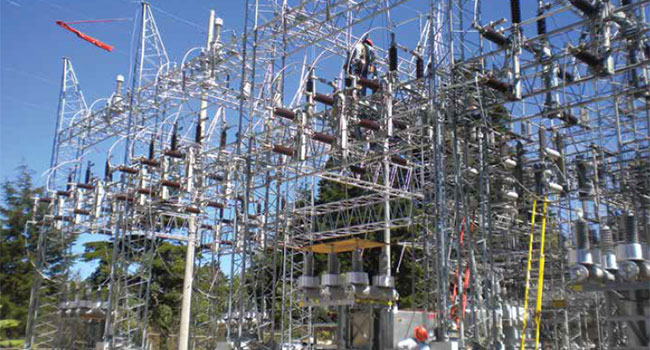
Facing the Risks
- By Kevin Wine
- Dec 19, 2023
Electric Utilities worldwide face a range of risks and threats, including at the physical perimeters of their highly distributed operational sites. Security professionals grapple with challenges related to sourcing cost-effective and highly efficient physical security solutions to protect operational continuity, invaluable assets, and staff.
This task becomes even more complex when considering the requirement to monitor extensive areas in varying conditions (weather, animals) while accurately identifying and swiftly responding to potential threats, all while avoiding nuisance alarms.
Larry Bowe, CEO, PureTech Systems, the leader in geospatial, autonomous, AI-boosted video analytics aptly underscores the gravity of the situation: "Securing power facilities is not merely a priority; it's an absolute imperative. These facilities constitute the backbone of our society, and any compromise to their security could have far-reaching economic and social consequences."
There is growing recognition of the pivotal role that innovative yet proven technologies play in the market. In their quest to meet stringent security regulations, such as the physical security mandate CIP-014 (NERC), power utilities are increasingly turning to advanced solutions that not only satisfy regulatory requirements but also reduce the risk of power outages, reduce the cost of their overall security operations and protect the lives of employees and the public at large.
According to NERC.com, NERC's CIP-014 mandate calls for security plans that encompass measures to deter, detect, delay, assess, communicate, coordinate, and respond to potential physical threats and vulnerabilities.
Enter AI-Boosted Video Analytics at the Edge
In an ever-evolving security landscape, security measures must be highly adaptable. A pivotal stride in utility perimeter security involves the integration of geospatial, autonomous, AI-boosted video analytics at the edge. Bowe explains, "This technology signifies a paradigm shift in security. It empowers utilities to transition from reactive to proactive security measures."
This type of solution ingests video and other sensor feeds (like radar, acoustic sensors) to autonomously identify and deter suspicious activities at the perimeter in real-time. Whether it's a perimeter-based intrusion, theft, or even a potential act of terrorism, these systems at the edge eliminate the need to transmit vast amounts of video and other data to a central location for processing thereby reducing data on the network.
To further address financial constraints, AI-Boosted video analytics at the edge can seamlessly integrate with existing security monitoring systems. This integration is achieved without the need for a complete overhaul of the current infrastructure, adding a complementary layer to the existing perimeter system, enhancing overall capabilities, and increasing overall situational awareness.
Nuisance Alarms
According to ScienceDirect, a nuisance alarm is when an alarm detection device reports a valid detection, but it is an occurrence that has no security implication. Some of the biggest challenges in securing critical infrastructure (like electric utilities) are to ensure minimal nuisance alarms while maintaining a very high probability of detection. Nuisance alarms can be triggered by benign events, such as wildlife or environmental factors, overwhelming security teams. Nuisance alarms can be disruptive, expensive, time-consuming, and, most importantly, can desensitize security personnel and lead to complacency. And should a real alarm occur, it could either be ignored or buried in nuisance alarms and missed.
Now, let’s think about the time it takes to process a nuisance alarm. Let’s take a 100-camera system; If each camera generates two nuisance alarm per day, per camera, the operators will need to process 200 nuisance alarms per day. Let’s assume it takes an operator 3 minutes to disposition a nuisance alarm.
3 minutes X 100 cameras x 2 nuisance alarms = 10 hours
It would take operators 10 hours per day dispositioning nuisance alarms. The chances of missing a real detection are now dramatically reduced as it would be buried in the nuisance alarms. Imagine a Central Monitoring operation responsible for monitoring thousands of cameras for a large organization such as a public utility.
Providing automated detection and autonomous response is critical so security personnel are not required to watch the monitoring system 24/7. Rather, the systems can alert them when something of concern occurs and even take automated actions such as invoking deterrence or locking down a facility.
What Now?
PureTech's edge video analytics solution stands at the forefront of securing electric utilities in today's rapidly evolving security landscape. These sophisticated solutions, which process data directly at the edge, are expressly designed to meet the distinctive security needs of power utilities and other critical infrastructure facilities, offering immediate threat detection, comprehensive situational awareness, seamless integration, and regulatory compliance.
PureTech’s solution is designed to enhance existing VMS. A VMS at a power utility can stay in place and be fortified through PureTech’s edge solution (in the background).
In a world where security threats to power utilities are increasing, PureTech's AI-Boosted geospatial video analytics at the edge offers robust and reliable offense and defense. These solutions amalgamate innovation, and technology representing the vanguard of power utility security. Empowered by such advanced technology, power utilities can steadfastly deliver uninterrupted, dependable, and secure energy to communities across the globe.
This article originally appeared in the November / December 2023 issue of Security Today.